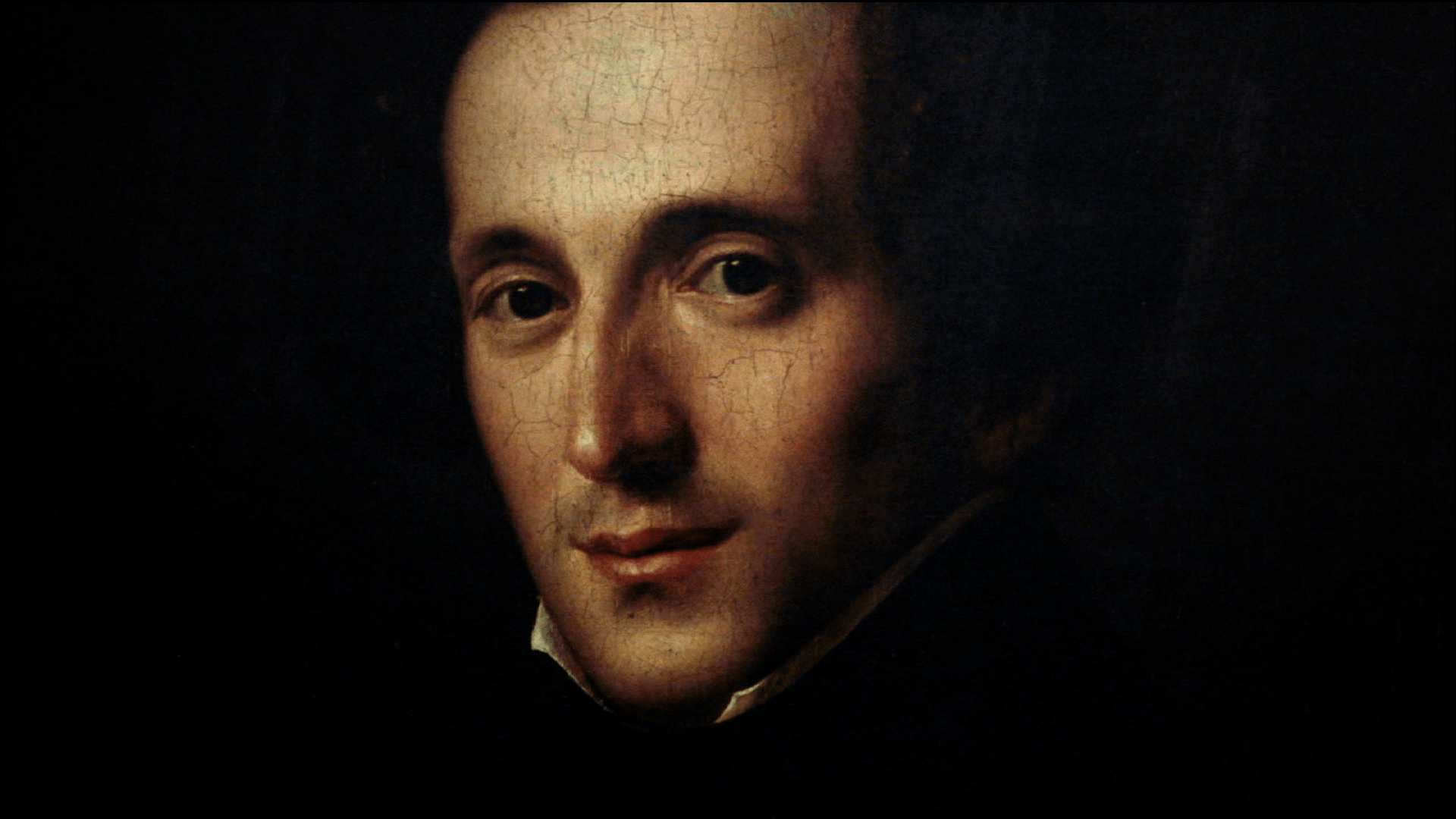The key of E minor seems to have had special significance for Felix Mendelssohn. It opened the door to music filled with quiet anxiety, mystery, and haunting pathos. For example, consider the turbulent, windswept Romanticism of Mendelssohn’s song without words, the Albumblatt In E Minor, Op.117. Here, the pervasive melancholy of E minor is all the more striking when contrasted with the brief, sudden turn to sunny E major in the piece’s transcendent middle section. Or listen to the Prelude and Fugue in E minor, Op. 35, No. 1, which pays homage to the contrapuntal majesty of J.S. Bach. Perhaps the most famous example of Mendelssohn’s E minor pathos can be heard in his Violin Concerto.
The restless, searching melody which opens Mendelssohn’s String Quartet No. 4 in E minor may remind you of the opening theme of the Violin Concerto. The melody emerges over the hushed tension of a syncopated rhythmic motor in the second violin and viola. Its rising arpeggio echos a similar Mannheim Rocket motif which opens the final movement of Mozart’s Symphony No. 40. Yet, in Mendelssohn’s hands, the motif moves in a completely new direction, initiating a haunting, continuously searching melody filled with lament. At the end of the exposition, listen to the way this opening motif moves out of the shadows into a soaring and passionate statement in G major (2:19). As we enter the development section, new adventures begin with this rising arpeggio motif, initiated by the second violin. A thrilling musical conversation unfolds between the instruments. Listen to the sly, “covert” way the first violin slides into the recapitulation (7:21). In this case, after the drama of the development section, we return “home” under cover of darkness through the back door.
The second movement is one of Mendelssohn’s sparkling scherzos. It’s music filled with fun, virtuosity, and continuous activity. There is all of the nocturnal magic we hear in Mendelssohn’s music for A Midsummer Night’s Dream. Following a beautiful and nostalgic statement in the viola, the movement fades into the night.
The third movement is a serene and prayerful song without words. A beautiful and expansive melody floats over an almost continuous rhythmic motor. An intimate chorale brings a brief moment of repose.
The final movement (Presto agitato) returns to E minor with a sparkling and exhilarating sonata-rondo. It’s a passionate, sometimes fiery celebration of driving forward motion. This joyful and unabashed musical conversation unfolds with an enticing ease that is distinct to Mendelssohn’s music. The final cadence is punctuated by a surge of gusto. This is music which is pure fun.
The newly married Mendelssohn completed his Fourth String Quartet in June, 1837 while celebrating his honeymoon in Germany’s Black Forest region. As with the Violin Concerto, it was written for the violinist Ferdinand David. David served as the concertmaster of the Leipzig Gewandhaus Orchestra, the esteemed ensemble to which Mendelssohn was appointed music director in 1835. This piece is part of the Op. 44 set of three string quartets which were dedicated to the Crown Prince of Sweden.
Here is the Emerson String Quartet’s 2004 recording:
Recordings
- Mendelssohn: String Quartet No. 4 in E minor, Op. 44, No. 2, Emerson String Quartet emersonquartet.com

